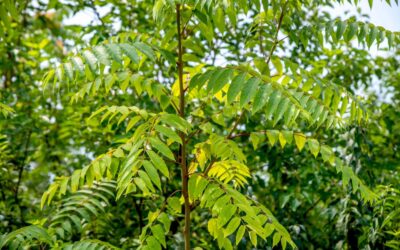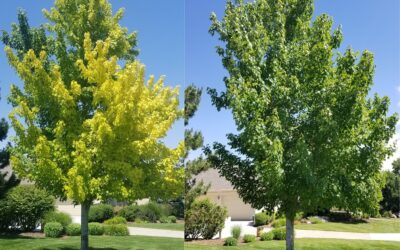If you’re looking for a medium-large shade tree that’s easy to grow, showy, nice-smelling and loves living in Colorado as much as you do, take a look at the Linden.
Linden Species, Varieties and Traits
There are over 30 species of Linden scattered throughout North America, Europe and Asia, with four varieties commonly grown in Colorado: the American or Basswood, the Littleleaf, the Redmond, and the Greenspire.They have slender, upturned branches with dense canopies and range in height from 50 to 130 feet at maturity.
Regardless of species, Lindens share common traits. They have asymmetrical deep green heart-shaped leaves and fragrant yellow flowers that attract bees during their summer bloom. Their thick foliage makes them excellent shade trees, and it turns a brilliant yellow in fall. They are relatively slow growers, though, so it takes a few seasons to develop significant amounts of shade.
The pliable, straight-grained wood of the Linden has made it a favorite with cabinetmakers and designers of musical instruments like guitars and flutes. Its flowers and nectar are used in perfumes and oils as well as in herbal medicines, and its leaves are brewed for a distinctive tea.
Climate, Disease Tolerance and Maintenance
Lindens do well in Colorado’s wide-ranging climate, tolerating sub-zero temperatures and alkaline soils. They are popular in landscapes, both as specimens and wind blockers, with Greenspire and Redmond’s pyramidal shapes drawing the eye upward and Littleleaf’s broader crown making for a more rounded look. The Redmond’s new growth branches turn a reddish color in fall, adding some winter color.
Hot weather can cause some leaf scorch and the flower nectar can attract aphids along with bees, accompanied by ants that herd them and other insects that feed on them. But the trees are hardy and generally not susceptible to disease. They are easy to grow and maintain, but are sensitive to some chemicals, so homeowners should avoid applying liquid herbicides and fertilizers that contain weed blockers. If you see signs of distress, it’s best to contact a certified arborist to be sure the problem is correctly diagnosed and treated. Because the trees can discharge a fair amount of nectar, it’s better to avoid planting them where vehicles will be parked for extended periodsbecause it can damage the finish if left on too long.
Call us today at 303-623-8733 to discuss planting a Linden on your Colorado property and learn more about our complete range of arborist and landscape services.



